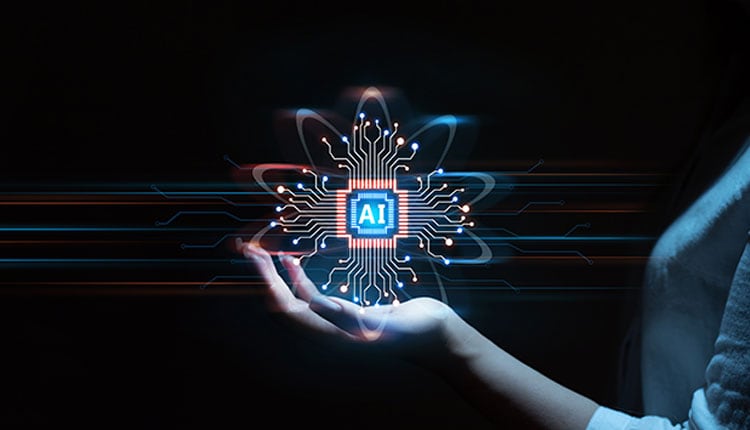Getting a job in tech used to be all about skills and the right degree. Now? It starts with passing an algorithm.
In 2025, artificial intelligence isn’t just changing the way we code or solve problems—it’s transforming how people land jobs in tech. From resume screening bots to automated video interview tools, AI has become the first line of defence in many companies’ recruitment processes.
But here’s the good news: with the right strategies, candidates can use this system to their advantage. Whether you’re a fresh graduate, career switcher, or seasoned tech pro, understanding how AI hiring tools work is key to getting your foot in the (virtual) door.
Why AI Is Being Used in Recruitment
Hiring managers are under pressure. With hundreds or even thousands of applicants per tech role, it’s impossible to manually read every CV. That’s where AI comes in.
Tools like Applicant Tracking Systems (ATS), AI resume scanners, and automated interview platforms help:
- Filter out unqualified applicants faster
- Reduce human bias (in theory)
- Speed up the time-to-hire process
- Identify candidates who align with job keywords and behavioural profiles
Big names like Amazon, Google, and IBM already use AI-driven tools at different stages of their recruitment pipeline. So do countless startups, consultancies, and mid-sized tech firms. If you’re applying for a tech job in 2025, chances are, you’re already interacting with an algorithm before a human sees your application.
What the AI Is Looking For
AI recruitment tools don’t have gut feelings. They scan for signals based on data—usually resume content, keywords, formatting, or even your facial expressions during video interviews.
Here are a few things they analyse:
1. Keyword Match
Your resume is scored based on how well it matches the job description. Terms like “Python,” “cloud architecture,” or “cybersecurity risk management” can make or break your chances. If you’re applying for a cloud role, make sure those cloud-related tools (AWS, Kubernetes, etc.) are clearly listed.
2. Job Title & Skill Relevance
If you’ve held titles similar to the one you’re applying for, or your skills are up-to-date and aligned with the role, you’ll rank higher.
3. Certifications & Courses
AI tools are trained to prioritise industry-recognised certifications. For IT learners, including things like CompTIA Security+, AWS Solutions Architect, or Google IT Support can help you stand out.
4. Formatting
Believe it or not, resumes with fancy graphics or columns might confuse the ATS. Stick to clean, traditional layouts with clear headings.
5. Soft Skills & Language Use
Some AI systems look at tone and phrasing in your resume or cover letter. Action-oriented language and evidence of communication, leadership, or adaptability can work in your favour.
What About AI Interviews?
If you get past the resume stage, you might be asked to do a pre-recorded video interview. These aren’t reviewed by people (at least not initially).
Instead, AI analyses:
- Facial expressions and eye movement
- Speech clarity and tone
- Use of technical keywords or behavioural examples
The goal is to predict how you’d behave in real-world scenarios or whether you meet the employer’s cultural criteria. Creepy? Maybe. But it’s becoming common.
Humanising the Experience
The irony? To impress an algorithm, you need to sound more human.
- Speak naturally. AI can detect scripted responses.
- Be concise. Rambling won’t help.
- Use the STAR method. Situation, Task, Action, Result—a classic, still relevant.
How to Stand Out in an AI-Driven Hiring World
You don’t need to beat the bots. You just need to play smart. Here’s how:
1. Tailor Every Application
Don’t reuse the same resume for every job. Use the job posting as a cheat sheet. Mirror the keywords, highlight relevant experience, and adjust your summary.
2. List Certifications and Projects Clearly
Mention certifications by their exact names. Link to GitHub projects, portfolios, or code samples. AI tools love tangible proof of skills.
3. Clean Formatting Wins
Use a single-column layout. Avoid headers, footers, or text boxes. Save your resume as a Word doc or PDF unless otherwise stated.
4. Practice AI Interviews
Platforms like HireVue or Vervoe have demo features. Try them. Record yourself, watch it back, and refine your delivery.
5. Upskill Intentionally
Short-term certifications from recognised platforms (like Ascend Education!) can boost your ranking in AI systems. They signal commitment, current skills, and credibility.
A Real-World Story
Take Jordan, a recent IT graduate who applied to 25 jobs and got no responses. Once he adjusted his resume to match job descriptions and mentioned his AWS and CompTIA certs clearly, interviews started rolling in. His final role? A cloud engineer trainee position at a Fortune 500 company.
“It wasn’t that I was unqualified,” he said. “I just wasn’t talking to the algorithm in the right language.”
Final Thoughts: Tech with a Human Touch
AI is here to stay in hiring. But it’s not about replacing human recruiters—it’s about narrowing down choices faster. If you know how to work within this system, you can land interviews quicker and with less frustration.
For tech learners, it means this: treat your resume like code. Optimise it, test it, and debug where needed.
And remember, at the end of the day, you’re not trying to impress a machine. You’re using it to reach the humans on the other side.






